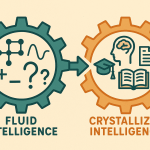Average IQ in Singapore: A Nation Engineered for Intelligence
With an estimated average IQ consistently ranking among the world's highest, often cited between 105 and 108, Singapore presents a remarkable case study in national cognitive development. This extraordinary achievement is no accident. It is the direct result of a meticulously planned, state-driven system built on the pillars of meritocracy, a high-stakes education system, and a unique cultural ethos known as *'kiasu'*. From its independence, Singapore's leadership recognized that without natural resources, its people were its only asset. Thus, intellectual capital has been deliberately engineered to be its most valuable and potent resource.

Singapore's high national IQ is the foundation of its transformation into a global knowledge economy.
A Uniform System, A Stratified Society
As a compact city-state, Singapore does not face the regional disparities common in larger nations. The Ministry of Education (MOE) ensures that every government school is well-funded and adheres to a high national standard. On the surface, this creates a uniform landscape of opportunity. However, beneath this uniformity lies a deeply stratified and hyper-competitive society. The intense pressure to succeed within this meritocratic framework has spawned a massive "shadow education system."
The private tuition industry in Singapore is a multi-billion dollar enterprise, with a majority of students attending extra classes to gain a competitive edge. This has created a subtle but significant cognitive stratification, where academic success is often correlated with a family's ability to invest in these supplementary resources. The national narrative remains one of equal opportunity, but the reality is an arms race of enrichment, where the starting blocks are often determined by socio-economic status.
The Singaporean Model: The Architecture of a High-IQ Society
Singapore's approach to cultivating intelligence is a powerful combination of top-down government policy, exceptionally rigorous educational standards, and deeply ingrained cultural pressures that permeate every level of society.
"We are our only resource. Our people are our assets. It is in our interest to make sure that every Singaporean is the best he or she can be." - Lee Kuan Yew, Founding Prime Minister of Singapore
The Crucible: The PSLE and Educational Streaming
At the heart of the Singaporean system is the Primary School Leaving Examination (PSLE), a national exam taken by all students at the age of 12. For decades, the results, compiled into a T-score (Transformed Score), determined a child's educational future. Although recent reforms have moved to a wider "Achievement Level" banding system to reduce stress, the exam's impact remains immense. It channels students into different secondary school streams: the 'Express' stream for the academically inclined, leading to the O-Levels; and the 'Normal (Academic)' and 'Normal (Technical)' streams, which offer a different pace and curriculum. This system is a powerful, if controversial, tool for cognitive sorting, designed to efficiently match students to educational paths that suit their abilities and the nation's economic needs.

The education system fosters intense discipline and a focus on academic excellence.
Meritocracy and the 'Kiasu' Mindset
The state ideology of meritocracy—the belief that advancement should be based solely on individual ability and effort—is the system's philosophical core. This is amplified by a cultural trait known as *'kiasu'*, a Hokkien term meaning "fear of losing out." This potent combination creates a powerful societal pressure to excel. The 'kiasu' mindset manifests as a deep-seated anxiety about not being the best, driving parents to invest heavily in tuition and enrichment, and motivating students with an intense desire not to fall behind their peers. While this fosters incredible discipline and high achievement, it also fuels a national debate about student stress, mental health, and the narrowing definition of success.
A Pragmatic and Future-Oriented Curriculum
The Singaporean curriculum is strategically and pragmatically aligned with economic goals. The Bilingual Policy is a cornerstone, requiring every student to become proficient in English—the language of global business, technology, and science—and one of three designated Mother Tongues (Mandarin, Malay, or Tamil). This approach is designed to enhance cognitive flexibility and problem-solving skills while ensuring citizens can operate in a globalised world and maintain cultural heritage. Furthermore, there is an immense and sustained emphasis on STEM (Science, Technology, Engineering, and Mathematics) subjects to fuel the nation's high-tech, knowledge-based economy and secure its future as a hub for research, finance, and development.
Cognitive Trends: Pivoting from Rote Learning to Holistic Growth
Having reached the pinnacle of global rankings in standardised tests like PISA, Singapore's leaders recognized a new challenge: a potential cognitive plateau. The very system that produced stellar results in structured, exam-based problem-solving was seen as potentially stifling the creativity, risk-taking, and critical thinking skills needed for future innovation. A national conversation emerged about whether the reverse Flynn effect could take hold if the education system did not evolve.
In response, the Ministry of Education has embarked on a deliberate, long-term pivot. The "Thinking Schools, Learning Nation" vision was an early step, and more recently, initiatives like the "Learn for Life" movement and the national "SkillsFuture" program have gained prominence. These policies aim to reduce the emphasis on high-stakes exams, introduce more project-based learning, and promote lifelong upskilling. The goal is to shift the national mindset from a relentless pursuit of grades to a genuine love for learning, thereby cultivating a more adaptable, creative, and resilient form of intelligence for the challenges of the 21st century.





